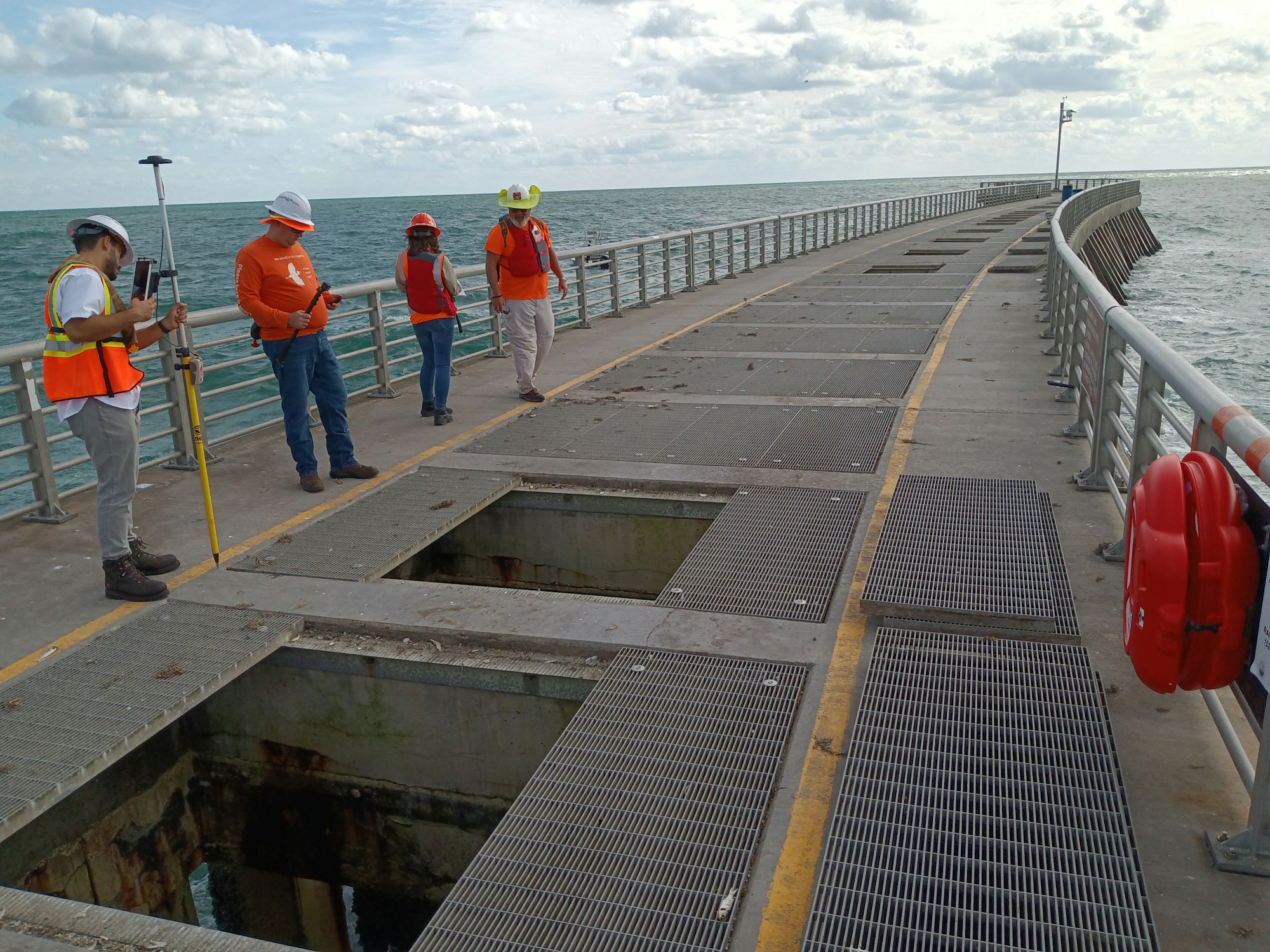We keep our thumb on the pulse of the jetties

Every couple of years, the Sebastian Inlet’s north and south jetties undergo the human equivalent of a physical exam by the Sebastian Inlet District.
In mid-October, the District’s consultant, Environmental Science Associates (better known as ESA), and their subcontractor, Wantman Group, Inc., wrapped up a structural assessment of the 1,000-foot-long north jetty and its 575-foot-long sibling on the south side of the inlet channel. For three days, engineers in hardhats and safety vests pored over the jetties, photographing nooks and crannies, scribbling in notebooks, and peeking at the undersides with a GoPro mounted to a pole.
As part of the inspection, the District’s team removed many of the 59 massive aluminum grates from the north jetty to look for cracks or deterioration in the concrete framework of the structure. Of course, the exposed openings presented a sizeable risk to the public, prompting the closure of public access to the jetties while ESA completed its work. Sure, it was mildly frustrating for visitors, particularly anglers who frequent the jetties, but we’re hoping you agree with our rationale: We abide by the axiom that an ounce of prevention is worth a pound of cure.
For many, the jetties provide people with an opportunity to interact with the Atlantic Ocean in a way that isn’t possible when you’re standing on the shoreline. The jetties give you something akin to the ocean fishing experience without the expense of owning a boat. However, the main purpose of the jetties is to provide safe navigation within Sebastian Inlet. That’s been our charge for 102 years. If you’ve ever witnessed an incoming tide ripping through the inlet like a whitewater river, you begin to understand the critical role of the jetties.

However, the jetties take a beating. They’re exposed to the worst nature has to offer battering waves, relentless winds, shifting sand and corrosive salt spray. As a special district, we have a responsibility to maintain the jetties in the most financially responsible manner possible and that is why we conduct regular jetty assessments. Our last inspection was in September 2019, so it was time to see how the jetties are faring.
ESA will provide us with a report on the completed analysis in about a month. We’ll use ESA’s recommendations to plan for future repairs and renovations, making sure that we catch little problems before they grow into larger, pricier problems. It just makes good sense. We’re committed to carrying on a legacy of channel maintenance that has endured more than 100 years.
